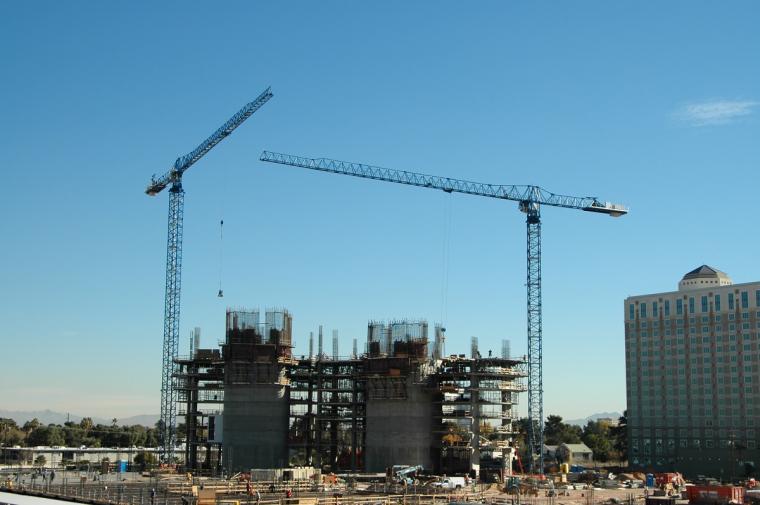
What is it that guests want, and how does that impact hotels? Today’s visitors are demanding sustainability, access to the outdoors, bigger lobbies and restaurant spaces, ADA compliance and (no real surprise) increased amount of room for visitors to hop on Zoom or Teams calls (think coffee bar areas). Here are more trends, courtesy of Hotel Management.
Changing guest and owner demands mean new normals in hotel construction. Here are some tips for what hoteliers should keep in mind when starting a construction project, whether it's a new-build, an expansion or a gut renovation.
1. Build Sustainability
There are ways to shorten renovation cycles with the environment in mind, according to Cesar Herrera, VP of design and construction at Outrigger Hospitality Group. “For example: Rapid tile dry-lay porcelain tile installs five times faster than traditional thin-set and utilizes cradle-to-cradle rubber recycling of old truck tires.” Herrera reported growing interest in solar energy, smart sensor systems and water reuse as efficient ways to minimize waste.
2. Consider the 2030 Challenge
MG2 Design and other firms are involved with the American Institute of Architects’ 2030 Challenge with the aim of minimizing the damage caused by construction projects. “We're working on reducing carbon, water, energy and materials sourcing,” said MG2 Principal Shannon Suess.
3. Share the Sustainability Story
Branding a hotel’s story around environmental initiatives is critical, said Rebecca Stone, principal and resort-hospitality practice leader at Oz Architecture, because many guests are focused on eco-friendly experiences.
4. Consider Modular Construction
While modular developments traditionally have been limited to select-service projects, they're gaining ground in more segments. “More and more we're starting to see these modular manufacturers being able to help push the boundaries ... in the three-and-a-half to four-plus-star development,” said Matt Page, VP and associate principal at SB Architects.

5. Plan for Delays
Cornelius F. Riordan, national construction law attorney with Robbins DiMonte, has seen an uptick in construction delays due to supply chain issues, price increases and COVID risks.
6. Source Locally
Sourcing materials from North America and/or Mexico has become a greater priority given the shipping container and sea port challenges of mid- to late-2021, said Blake Clancy, project executive at Coakley & Williams Construction. “As such, the hotel purchasing departments have a greater responsibility of identifying and understanding where the materials being specified will be manufactured and sourced.”
7. Know Where Parts are Coming From
Part of sourcing locally is knowing in advance what elements come from where, and how long it will take to get them. For example, Riordan noted that many solar panels are made internationally: “Can you identify domestic sources of solar panels or materials that will help you develop green energy power for your building?”
8. Digitize the Supply Chain
“Hospitality comprises a network of partners that must be in sync at all times,” Herrera said. “Systems integrations are key to effective planning and supplier communications.”
9. Design for Technology
With guests expecting an ever-increasing range of technology services, architects must plan for future capabilities before construction begins, Herrera said. Riordan agreed: “You want to make sure that you have the infrastructure in place, whatever it might be, to accept a new phone system or a new internet system with little or no disruption.”
10. Add Access to the Outdoors
Stone said that large patios, decks and courtyards that can be accessed by sliding doors or operable windows are increasingly popular. “We’re adding a variety of nooks in the landscape for guests to linger, with amenities that invite guests to stay and play,” she said.
11. Build Amenity Spaces
Clancy said he has noted an increased focus on amenity spaces at hotels. Marriott International’s AC brand has an expanded footprint for the lobby and restaurant space.
12. Build Lobbies for Connections
While kiosks may be increasingly popular, lobbies still need to accommodate a traditional check-in experience. “We are seeing a welcoming table, counter-height so the staff are standing,” Stone said. “The point is to provide the guest with options and ensure the design feels friendly and welcoming.”
13. Create Self-Care Spaces
Stone noted “a huge uptick” in hotels wanting self-care spa facilities on site. “Coming through the pandemic, we’re seeing a trend towards a ‘choose your own adventure-style’ approach, where there are a number of options for guests to use on their own,” she said.
14. Consider VRF Systems
Clancy said hoteliers are moving away from traditional fan coil unit and packaged terminal air conditioners as their primary guestroom heating and cooling systems in favor of variable refrigerant flow systems, which can provide superior acoustical performance and “vastly” increased energy efficiency.
15. Build Co-Working Spaces
Stone said these communal areas are “very high on the list of amenities for hotel design.” Community tables or coffee bar-style seating areas are a must, along with some enclosed rooms that let guests hop on a Zoom call, she said. “These typically offer ample glazing, providing guests visibility into the vibrant common space.”
16. Consider Cross-Laminated Timber
Suess has seen a rise in the use of cross-laminated timber construction methods—a large-scale, prefabricated, solid engineered wood panel.. “There's a few really interesting projects in different areas,” she said.
17. Design for ADA Compliance
The Americans with Disabilities Act extends to everything, Riordan said, including electric-vehicle charging stations—many of which may be difficult for people with restricted mobility to access.
18. Work with the Landscape
Stone has noted a more “campus-resort” environment, with cabins “immersed in the landscape” for privacy. “Walking paths connect the lodging to common amenities such as restaurants, bars, gathering spaces and wellness facilities,” she said.
19. Mitigate Price Increases
Riordan advises developing documents that mitigate potential price increases during the life cycle of a project. If there are any increases, he said, the costs should spread across the various participants so that no one individual or company seems to be bearing the brunt.
20. Maintain Communication
“From the office to the field, real-time communications streamlines project management for all stakeholders,” Herrera said. “When everyone is spread thin, powerful yet easy to use software solutions provide agility, accountability and transparency to minimize delays and risk.”
This article was reprinted with permission from Hotel Management. The original link can be found here.

